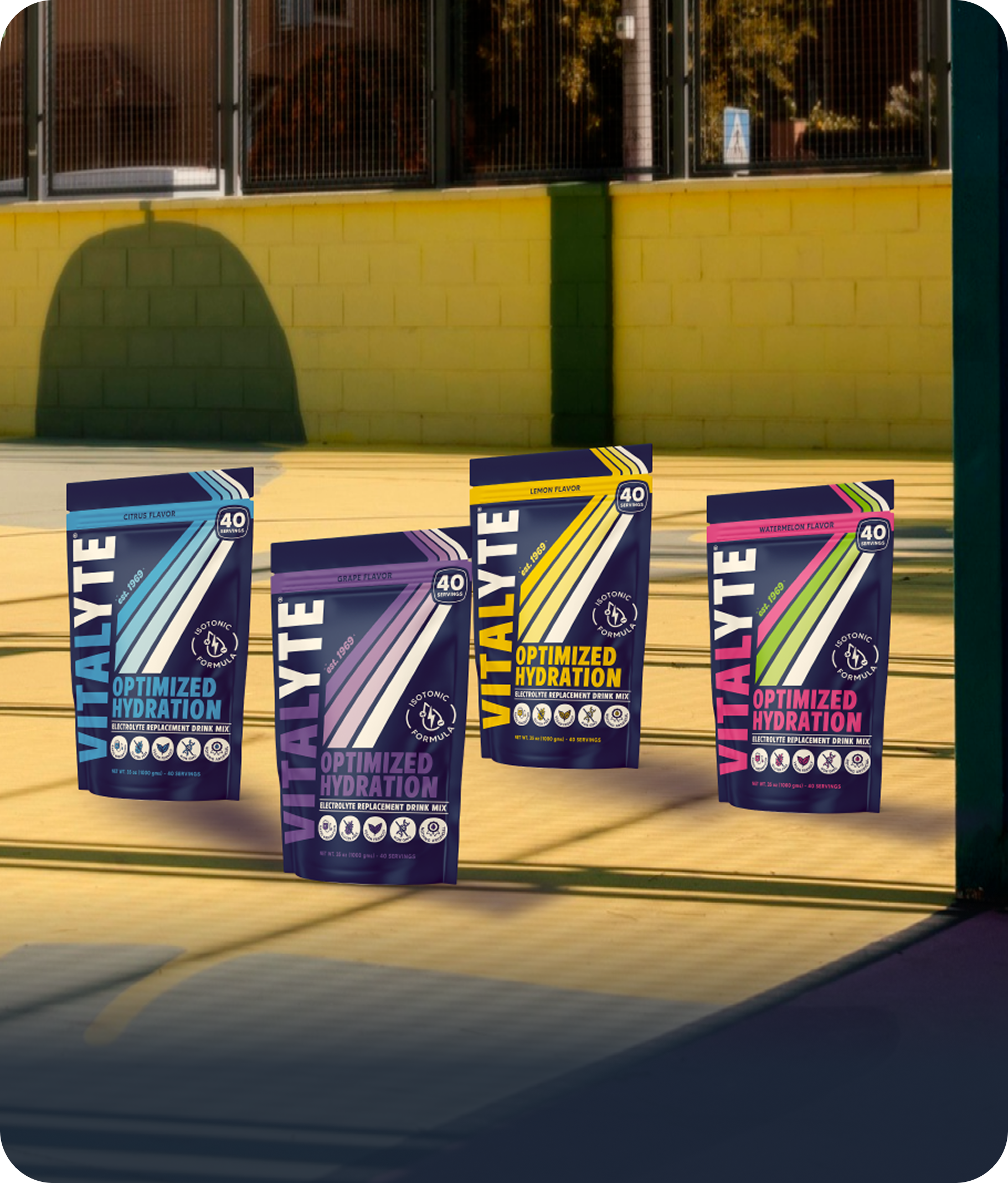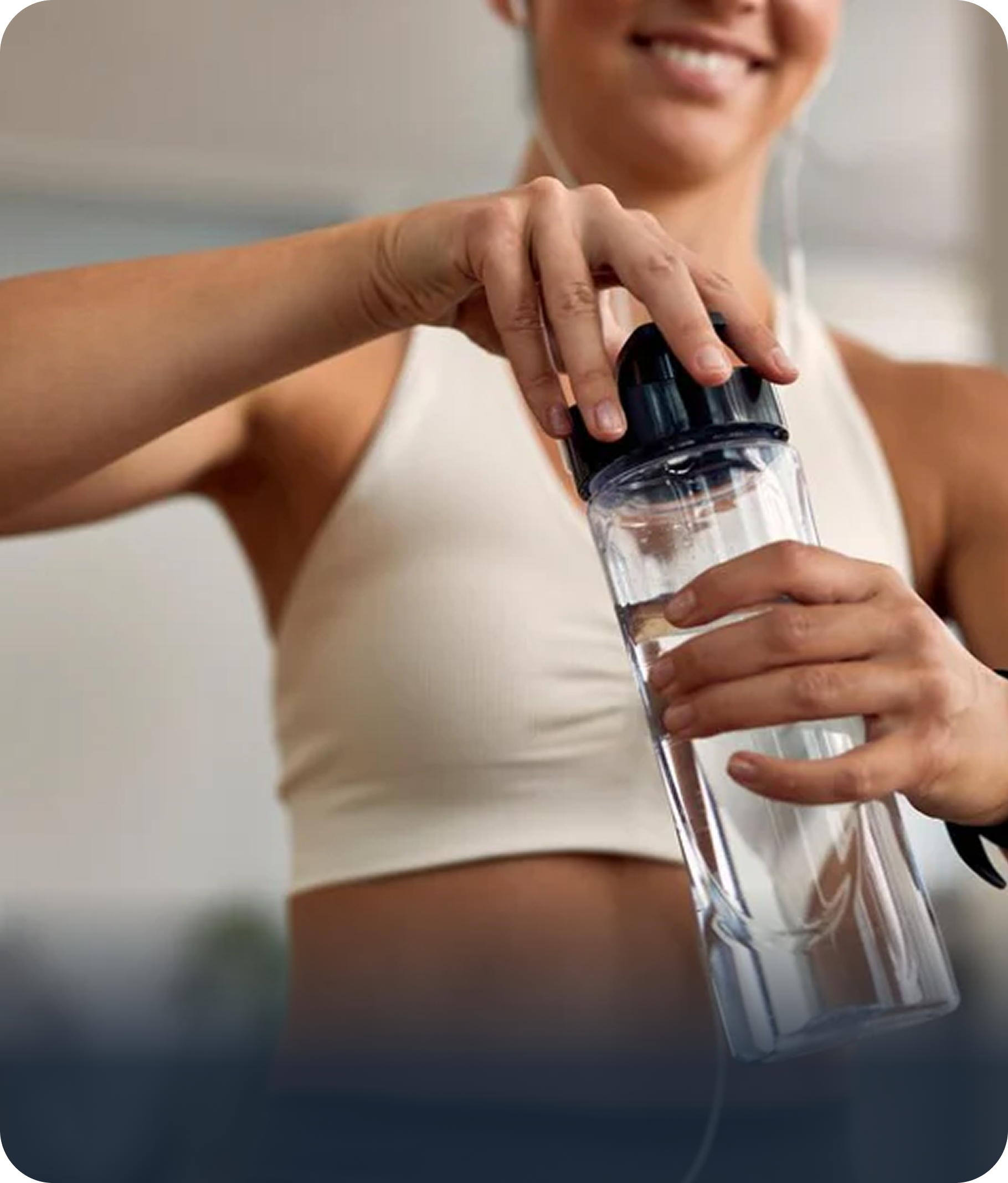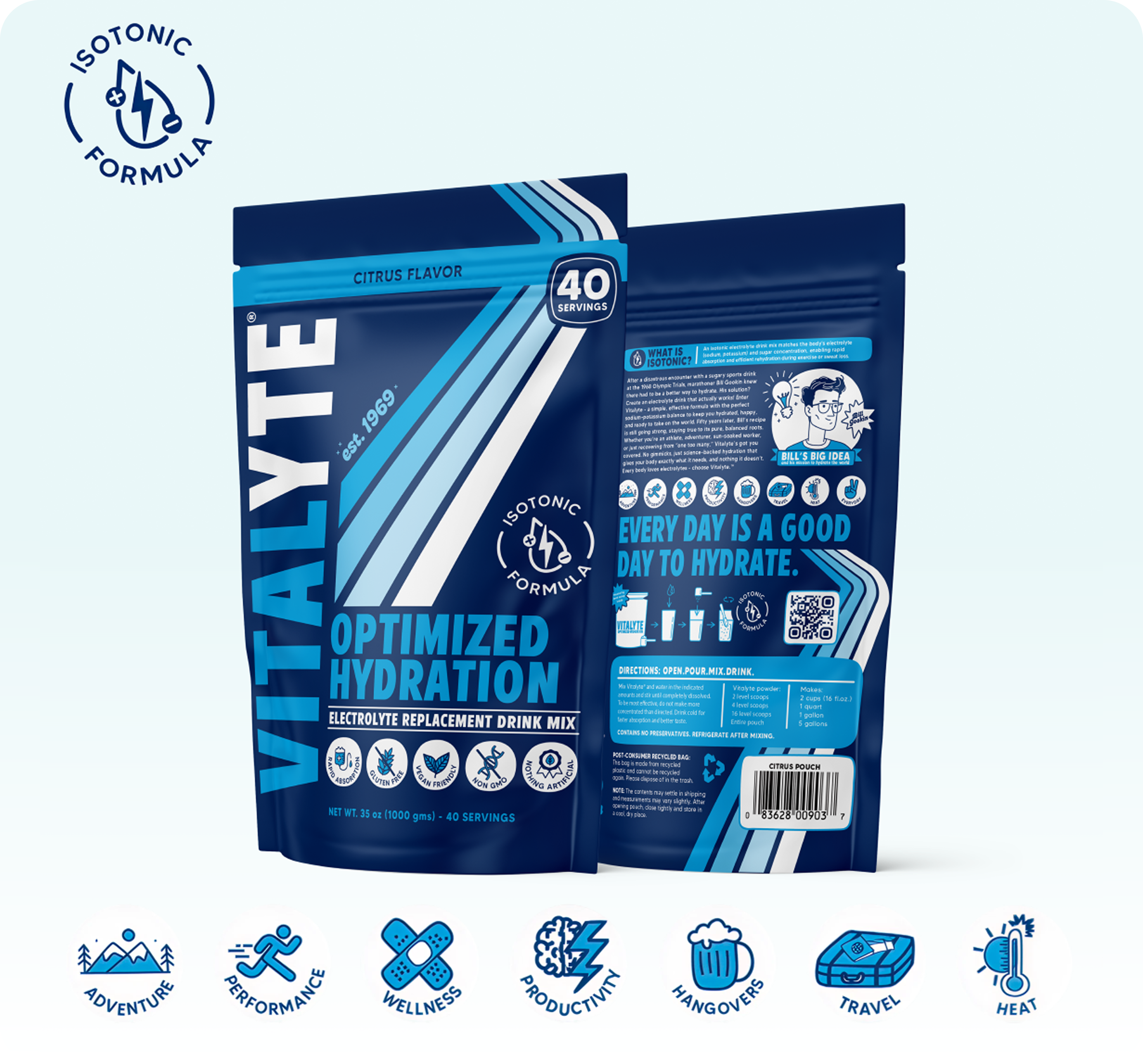Why Do Some Electrolyte Products Taste Salty?
Share

Electrolyte products taste salty because they contain excessive sodium, often 1000mg or more per serving, which is 5 to 10 times higher than properly balanced formulas. This high sodium approach creates poor ratios with other minerals (typically 5:1 sodium to potassium or worse), slows absorption by making the drink hypertonic, and can actually deplete your body's potassium reserves. Properly balanced formulas with moderate sodium (100 to 150mg) and adequate potassium taste refreshing, not salty, while providing faster absorption and better hydration.
The salty taste isn't a sign of superior hydration. It's actually a red flag for formulation problems that can work against you during exercise, work in the heat, or any situation where you need effective hydration.

The High Sodium Strategy: More Isn't Always Better
Some electrolyte brands have jumped on the high sodium trend, marketing products with 1000mg or more sodium per serving. These products taste noticeably salty because they contain large amounts of sodium chloride, which is literally table salt.
The marketing pitch sounds logical. You lose sodium when you sweat, so replacing lots of sodium must help, right? The reality is more complicated.
Your body maintains tight electrolyte balance. When sodium levels spike without proportional potassium, magnesium, and other minerals, your body has to compensate. This often means dumping your own potassium reserves to maintain cellular equilibrium.
Bill Gookin discovered this problem through 25 years of testing. As he explained: "Solutions with an excess of sodium help to retain water but in the tissues, not in circulation." That water retention shows up as puffy hands and feet, not improved athletic performance.
High sodium formulas often neglect potassium. Many salty tasting products have sodium to potassium ratios of 5 to 1 or worse. Your sweat contains both minerals in much more balanced proportions. Replacing only sodium forces your body to work harder, not easier.
This is what happened to Olympic swimmer Amy Van Dyken at the 1996 Atlanta Olympics. High sodium drinks without adequate potassium triggered chain reaction cramping across her entire body. The very thing meant to prevent cramping caused it.
The Concentration Problem: Salty Taste Signals Hypertonic Formula
Taste is actually a useful indicator of concentration. If an electrolyte drink tastes very salty, it's probably hypertonic, meaning more concentrated than your blood.
Your blood maintains approximately 280 to 300 mOsm/L concentration. When a drink exceeds 330 mOsm/L, it becomes hypertonic. High sodium content is one of the main factors pushing drinks into hypertonic territory.
Hypertonic drinks slow absorption. The high concentration creates osmotic drag, actually pulling water from your bloodstream into your digestive tract to dilute the solution before absorption can begin. You're temporarily making dehydration worse before things improve.
Gastric emptying slows down. Your stomach takes longer to release hypertonic solutions to your small intestine. That heavy, sloshing feeling many people experience with salty drinks comes from fluid sitting in the stomach instead of moving into circulation.
Products formulated at isotonic concentration around 280 to 300 mOsm/L with balanced electrolyte ratios taste refreshing, not salty. The moderate sodium works with other minerals and proper sugar concentration to create a drink your body can use immediately.
Who High Sodium Products Are Actually Designed For
To be fair, extremely high sodium formulas do have legitimate use cases. They're just much narrower than marketing suggests.
People on ketogenic or very low carb diets experience increased sodium loss through their kidneys. The metabolic shift causes your body to dump both water and sodium. These individuals may actually need and benefit from higher sodium intake.
Athletes who've had sweat testing showing extremely high sodium loss rates. Some people are genuine "salty sweaters" who lose 1000mg or more sodium per hour. For them, high sodium products matched with adequate potassium make sense.
Individuals with diagnosed low blood pressure who've been medically advised to increase sodium intake. In these specific cases, higher sodium can be therapeutic.
The problem is that these situations represent a small percentage of users. Most people buying electrolyte products don't fall into these categories. They're endurance athletes, recreational exercisers, outdoor workers, or health conscious individuals seeking better hydration.
For the majority, moderate sodium with balanced potassium works better than high sodium alone.

What Properly Balanced Electrolytes Taste Like
Bill Gookin spent 25 years testing formulations, and taste was one of his evaluation criteria. Not because he was chasing flavor appeal, but because taste reveals formulation balance.
Refreshing rather than salty. When sodium, potassium, and sugar are properly balanced at isotonic concentration, the drink tastes light and pleasant. You want to drink it, which matters enormously during long activities.
Natural fruit flavors come through. The taste of lemon, orange, or fruit punch isn't masked by overwhelming saltiness. You're tasting the actual flavor, not fighting past sodium to find it.
Not cloyingly sweet either. The 4 to 5 percent sugar concentration that creates isotonic formula also provides just enough sweetness without the syrupy quality of hypertonic sports drinks.
Vitalyte maintains 135mg sodium to 193mg potassium per serving, approximately a 1 to 1.4 ratio. This provides adequate sodium for the glucose co transport mechanism that accelerates absorption while preventing the imbalances that cause problems.
The result tastes clean and refreshing. People consistently report they can drink it during hard efforts without stomach issues or taste fatigue.
The Marketing Problem: Confusing More With Better
Why do brands make salty products if balanced formulas work better? Partly marketing, partly trends, partly misunderstanding the science.
The keto and paleo movements popularized higher sodium intake for specific metabolic reasons. Some brands saw this and assumed everyone needed more sodium, extrapolating specialized dietary approaches to general populations.
Social media influencers promoted high sodium products, often without understanding the physiology involved. When someone with large followings recommends something, brands jump on the bandwagon regardless of whether the science supports it.
Bigger numbers seem more impressive. Marketing teams know that "1000mg sodium" sounds more powerful than "135mg sodium" even if the lower amount in proper balance actually works better. They're selling the perception of potency, not optimized function.
The Gatorade comparison. Many high sodium brands market themselves as "3x more electrolytes than leading sports drinks." This is true but misleading. Gatorade is poorly formulated for rapid hydration due to excessive sugar. Being 3x better than a flawed product isn't the win they imply.
The real question isn't "how much sodium" but "what's the optimal balance for rapid absorption and effective hydration?" That answer, determined through decades of testing, points to moderate sodium with balanced potassium at isotonic concentration.

How to Evaluate Electrolyte Products Beyond Taste
Taste gives you clues, but here's what to check on the label for a complete picture.
Look at the sodium to potassium ratio. Divide sodium mg by potassium mg. If the result is over 2, the product is sodium dominant. Ratios near 1 or below indicates a better balance. Vitalyte's ratio is 0.7, meaning more potassium than sodium.
Calculate total concentration. This is harder without lab equipment, but you can estimate. Products with 1000mg plus sodium and high sugar are almost certainly hypertonic. Balanced formulas with moderate sodium and 4 to 5 percent sugar are likely isotonic.
Read the directions carefully. If a product says "mix to taste" or doesn't specify exact water amounts, it wasn't designed with absorption science as the priority. Isotonic formulas require precise mixing because concentration directly affects function.
Consider what's included. Do you see magnesium and calcium in addition to sodium and potassium? A properly formulated electrolyte powder include multiple electrolytes in balanced amounts, not just maxed out sodium.
Check for balanced sugar content. Around 16 to 20g per 16oz serving creates the 4 to 5 percent concentration that optimizes both absorption and energy. Much more or much less indicates different priorities than rapid hydration.
The Bottom Line: Taste Tells a Story
If your electrolyte drink tastes like seawater, that's not a sign of superior formulation. It's a red flag for excessive sodium, likely poor potassium balance, and probably hypertonic concentration that slows absorption.
Properly formulated electrolyte powder tastes refreshing because it's balanced. Moderate sodium, adequate potassium, appropriate sugar concentration, and natural flavoring create a drink that works physiologically and tastes pleasant.
This matters beyond just flavor preference. During long runs, hard workouts, or full days of outdoor work, you need to actually drink the solution consistently to maintain hydration timing. If it tastes terrible, you won't drink enough, which defeats the entire purpose.
Bill Gookin understood this. His 25 years of testing weren't just about absorption rates and blood chemistry. They were about creating a formula people could actually use consistently in real world conditions.
The result tastes good because it works well. Not the other way around.
If you're tired of salty, unpleasant electrolyte drinks that promise huge numbers but deliver questionable results, try a properly balanced isotonic formula. Your taste buds and your performance will both thank you.
Shop Vitalyte's naturally flavored, balanced electrolyte powder.
Frequently Asked Questions
Do I need high sodium electrolytes if I'm a heavy sweater?
Most people lose 500 to 1000mg sodium per hour during exercise. You can replace this with a higher volume of properly balanced electrolyte drinks rather than extremely concentrated formulas. Drink more frequently rather than making drinks saltier. If sweat testing shows you lose over 1500mg per hour, then high sodium products with matched potassium may be appropriate.
What about salt pills or tablets?
Salt tablets provide concentrated sodium without adequate supporting minerals or the glucose needed for optimal absorption. They're inferior to properly balanced liquid electrolyte drinks. Research shows they don't prevent cramping or improve performance better than balanced drinks.
Can I add salt to my electrolyte drink to make it work better?
Adding salt to an already balanced formula turns it hypertonic and creates the ratio imbalances that cause problems. If you feel you need more sodium, drink a second serving of properly formulated powder rather than doctoring the formula.
Why do some athletes swear by high sodium products?
Individual response varies. Some people do have higher sodium needs. Others experience placebo effects. And some are comparing high sodium products to poorly formulated commercial sports drinks rather than properly balanced alternatives. Context matters.
How can I tell if a product is isotonic?
Calculate carbohydrate percentage by dividing grams of carbs by fluid ounces and multiplying by 100. If the result is 4 to 5 percent, it's likely isotonic. Also check if directions emphasize exact mixing ratios. True isotonic formulas specify precise concentration
Disclaimer: This article is for informational purposes only and doesn't constitute medical advice. Individual electrolyte needs vary. Consult with a healthcare provider for personalized hydration recommendations.
About the Author
Evan Lucas, COO of Vitalyte
Evan has been with Vitalyte for 27 years, working to carry forward Bill Gookin's legacy of creating honest, effective hydration solutions. He uses Vitalyte daily for general wellness and hydration, and helps guide the company's commitment to real-world testing and straightforward science over marketing hype.

























